On May 14th, 2025, Russian news agency, Известия, published an article entitled:“Вам Букет: Запущено производство мини версии легендарных «Гераней»”. The article describes Russia’s method for the modernization of the Shahed 131/136. Russia’s new method is ‘miniaturization,’ literally shrinking it to a fraction of its original size.[1]
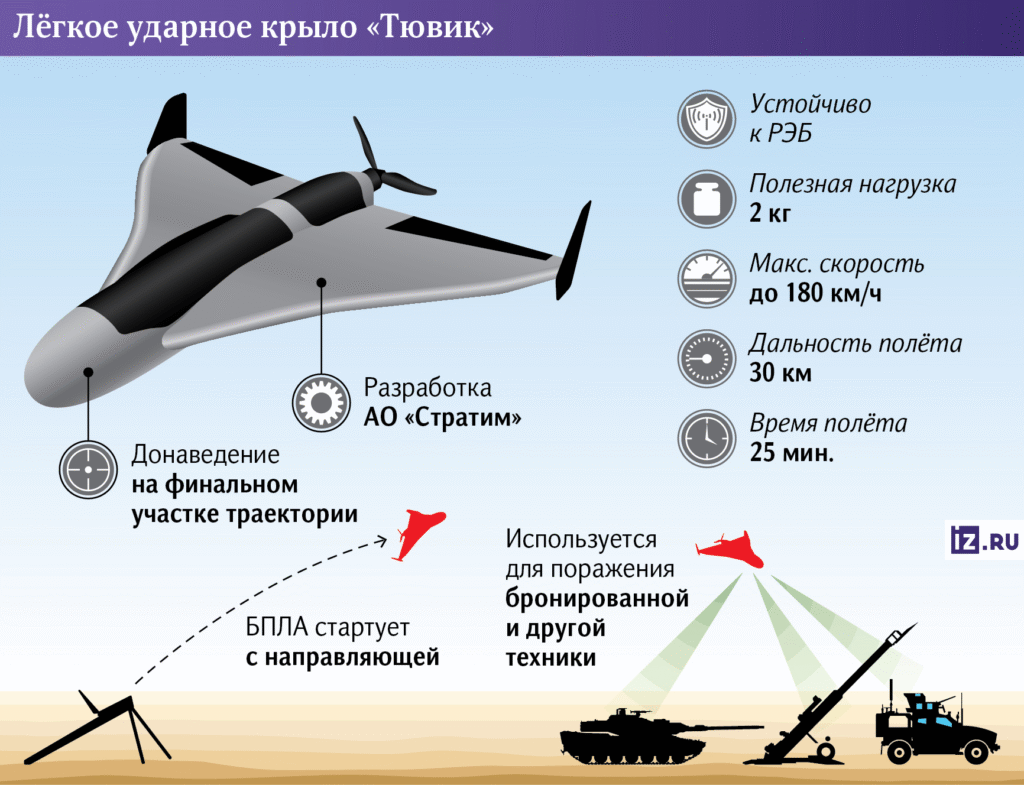
Called the Tyuvik, Russia’s new miniaturized Shahed Russia has the following specification: its warhead is 2 kilograms, its max speed is 180 kmph, its range is 30 km, its flight time 25 minutes and it is designed specifically for targeting and striking armored vehicles. It is likely that the Tyuvik descends at a degree less than 60 (i.e., a limitation for the Shahed 131/136 model and its versioned drones). The Russians claim the drone is designed to overcome Ukrainian «РЭБ», thanks to Artificial Intelligence. Ukrainians, documenting Ukrainian losses from Russian drone attacks, have already identified Russia’s AI in Russian drones in attacks that came most recently throughout Kyiv and the rest of Ukraine, according to Defense News and Defense Express.
The article, however, is a key to unlocking the secret of one of Russia’s most ambitious projects for the Ukraine war. Towards the end of the article, the authors describe how regiments of unmanned systems are being formed in Russia’s navy, the Военно-морского флот (i.e., «ВМФ»). The most important aspect of their formation, however, is revealed through the language the author utilizes to describe how they operation.

The author states: “Они объединят разные виды роботизированной техники: воздушные, наземные и морские.” The regiments unite a myriad of robotic equipment from multiple dimensions on Sea, Air, and Land. The unification of robotic equipment from multiple dimensions on Sea, Air, and Land is none other than a Combat Management System. What is phenomenal about this revelation is that the unification these newly formed regiments of Russia’s navy seek proceeds from a SEAL approach where the orientation is based first of all on the sea before the air or land rather than either way around.
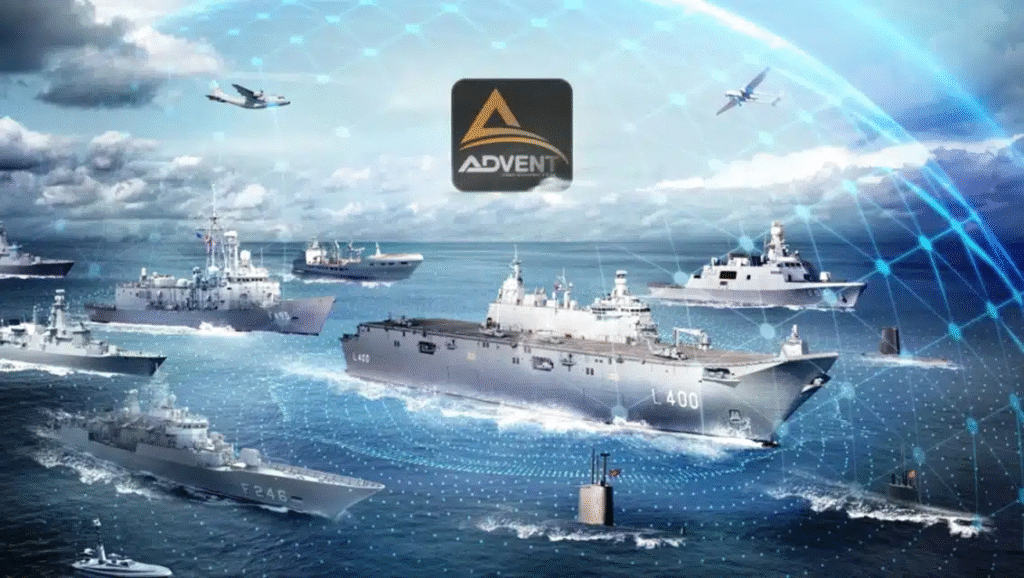
The sea orientation toward the unification of unmanned systems is a unique orientation for a novel problem in combat management systems. The Turks, who appear to have developed the most advanced combat management system, are the only ones to have applied the sea orientation towards the implementation of a unified sets of systems for managing combat on the high seas.
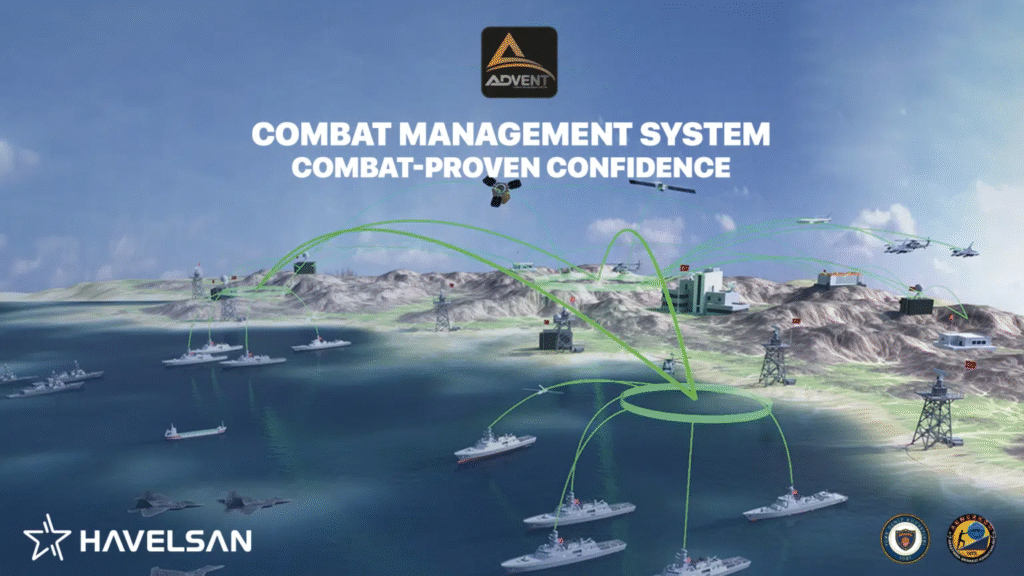
At the LIMA 2023 International Maritime and Aerospace Exhibition between May 23-27, 2023, in Malaysia, the Turkish naval and aquatic defense solutions company, Havelsan, unveiled the so-called Advent Combat Management System (CMS), a platform for unifying “network-centric operations in naval warfare,” whose aim is to centralize real-time insights from multiple sensors and data streams into pipelines enhanced with Artificial Intelligence for advanced analytics, predictive intelligence, reconnaissance and strike modeling, incoming simulation capabilities for proximate and approximate real threats and perceivable risks all into a single point of operational command.
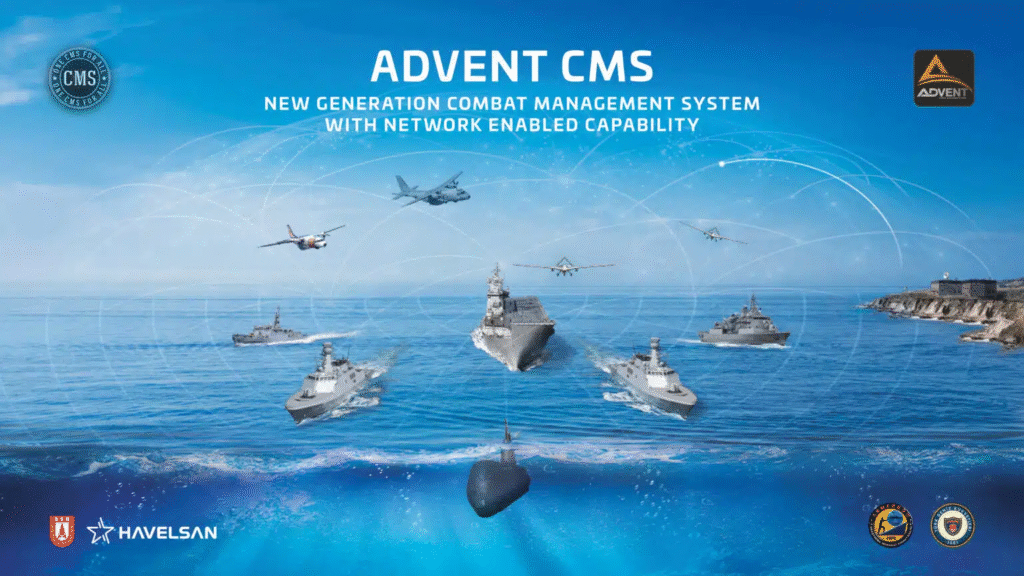
These extensible C4I pipelines, provide access and control for immediate situational awareness in three dimensions (i.e., below the ship, on the surface of the sea, above the ship), resource optimization for allocating combating resources in directions to strengthen vulnerable weaknesses or weaken inefficient, unnecessary, or inappropriate strengths in real-time, support for critical strategic, tactical or operational decision making with logging, tracking, and geolocated mapping, secure communications for all combating resources from deployed Sea, Air or Land drones, manned aircrafts such as helicopters or fighter jets, vehicles, armor such as tanks or infantry soldiers, firing squads for land or air targets such as artillery, mortar, or machine gun squads, all engaged in the pursuit of an Advent identified target objects.[“Advent Elevating Naval Operations to New Heights.” NavalNews, May 19th, 2023. https://www.navalnews.com/naval-news/2023/05/advent-elevating-naval-operations-to-new-heights/]

In terms of its competitors, the Turkish Advent system supersedes the American Delta system, which is a glorified map with no pipeline, extensible or otherwise, for the development of real-time combat management systems. In contrast with the Turkish Advent system, the America Delta system neither unities dimensions nor proceeds from a SEAL approach. America’s Palantir and other software systems developed with AI are also static, ground based, non-extensible, amorphous systems.
This is despite efforts to foster data literacy and familiarization with AI systems, APIs, and programs such as ChatGPT and its offspring in the United States Army, as a recent report by the Modern War Institute at Westpoint says. The article, however, does not mention the subject of Combat Management Systems and their importance for the modern battlefield. Even though the author says, “[the] battlefield of the future will be shaped by those who master data and AI, and the Army must equip its leaders to meet this challenge head-on,” the term “combat management system” is completely absent from the article. Does the Army not equip its leaders to meet the challenge of a CMS head-on?

The sea approach to unified, AI-driven, C41 extensible pipelined Combat Management Systems exceeds those based on the land or air for two primary reasons. The first reason is that a sea approach incorporates the development of technologies responding to constant movement on the water. The second, which is both a standalone and subordinate to the first, is that the history of the development of targeting systems has demonstrated a greater propensity for more rapid developments for improved accuracy, targeting, or firing at sea than on land or in the air. The American experience with the development of a proper mechanism in the early 20th century, for instance, is an example of both of these two phenomenon together.
In response to the roll and pitch of the sea, cruiser HMS Terrible’s Captain Sir Percy Scott, a fellow iconoclast and the Royal Navy’s resident gunnery genius, developed a technique called ‘continuous aim firing,’ which required a gunner to keep a gun trained a target at all times by moving the gun up or down as the ship rolled and pitched instead of waiting for the rocking gun to coincide with the target. The new firing technique quickly led to another. Called, “single-key firing,” the new technique coordinated all guns to fire at the top or bottom of its roll. These firing techniques from the 20th century, all of which are now incorporated into the most advanced firing systems in naval gunnery, are a response to the currents and waves at sea and responses to these are far more attuned to changes in movement on land or air than either of the latter two on their own. Hence a sea-approach to a combat management system supersedes aerial or terrestrial approaches.

The fact that the Russians have decided to rely on the sea orientation for the unification of unmanned systems into a single AI driven platform demonstrates Russia’s forward thinking and innovative combat ingenuity. At a time when the focus among Ukrainians is stuck on where to source its armored personnel carriers such as the bogus claim about Italy delivering 400 M113 APCs, modifications to the outmoded Abrams M1 tank (still running on jet fuel) for the defeated 47th Brigade, the structure of its military, or scandals among its highest ranking brass, the Russians are concerned with solutions for the most important challenges on the battlefield and the development of a unique approach to a novel problems in warfare. Russia’s focus on solutions comes alongside of and accompanies its most recent, rapid advances in Toretsk, Pokrovsk, and Kramatorsk and Slavyansk directions, as only Arabic sources report. AlarabyTV is one such source.

It is clear that Russia’s approach to the implementation of a sea approach to a unified platform for combat management comes from its layered approach to the Ukrainian battlefield’s many dimensions. In its destruction of Ukraine’s ‘drone walls’ in the Donbas, Donetsk, and Kharkiv regions, Russia starts from the top down. The Russian approach seeks and destroys Ukrainian surveillance and reconnaissance drones before or alongside the effort to neutralize forwardly deployed Ukrainian drone operators and their drones. Ukraine’s drone wall, a system designed from the bottom up, focuses largely on terrestrial targets rather than the layers required for its deployment, thereby limiting its effectiveness and reducing its results.
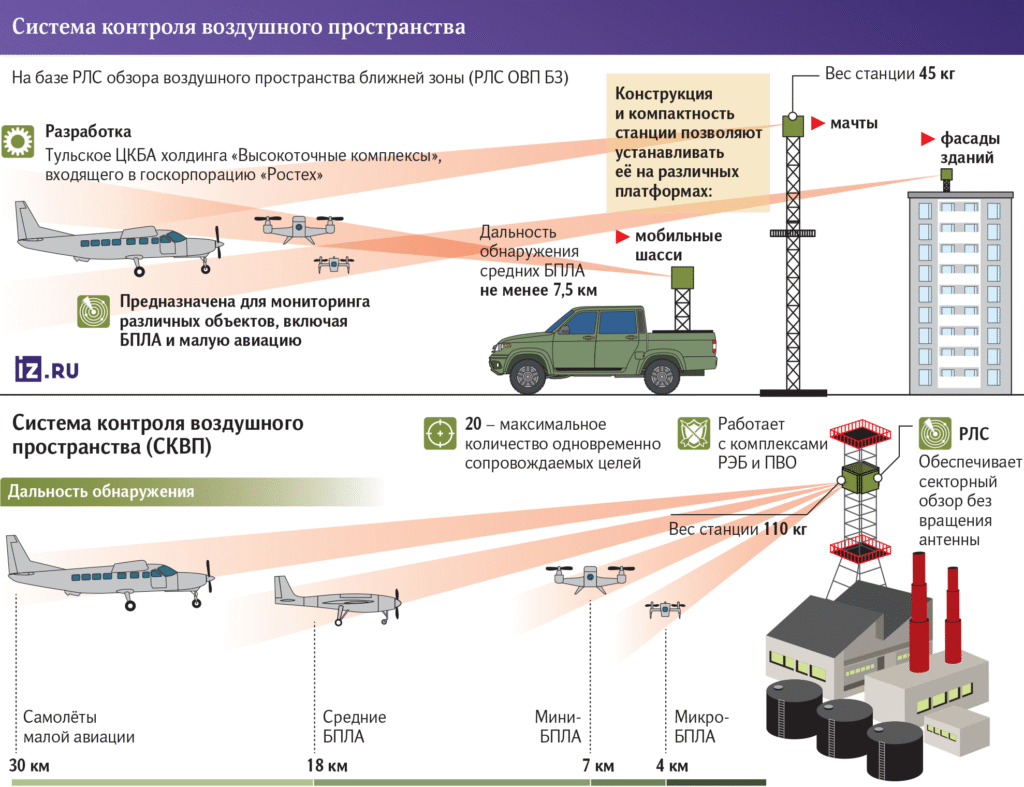
The outcome is that the structure for a Russian advance remains in place, even though a unit or more of Russian armor perishes from these attacks. Russia’s focus on seeking and destroying Ukraine’s infrastructure, a fluid, constantly moving, shifting layer of drones, rather than the Ukrainian drone operators per se, undermine’s Ukraine’s foundation and ability to leverage effectively its deployment of a ‘drone wall.’ It is likely that the difference in the two approaches comes from a major disparity in Ukraine’s own resources, whereas Russia’s resources are far more expansive. The Ukraine, for instance, lacks AWACS planes; Russia does not. Based on designs from Russian sources on Russia’s Система контроля воздушного пространства (СКВП), the Russian approach takes into consideration the full range of integrated systems for surveillance on the battlefield; Ukraine’s apparently does not. [https://iz.ru/1889516/roman-krecul-bogdan-stepovoi/prismotr-za-malymi-razrabotana-rls-dla-obnaruzenia-bespilotnikov]
Russia’s ambition for the unification of Sea, Air, and Land into an AI driven combat management system conforms with its overall ambition for the unification of its digital cloud initiative. Russia’s РБК described the need to unite “воздушное, космическое и цифровое пространство в единую сеть.”


Bibliography
[1] – [“Вам Букет: Запущено производство мини версии легендарных «Гераней»”. Известия. 14 Мая, 2025. https://iz.ru/1885565/bogdan-stepovoi/vam-buket-zapuseno-proizvodstvo-mini-versii-legendarnyh-geranei]
